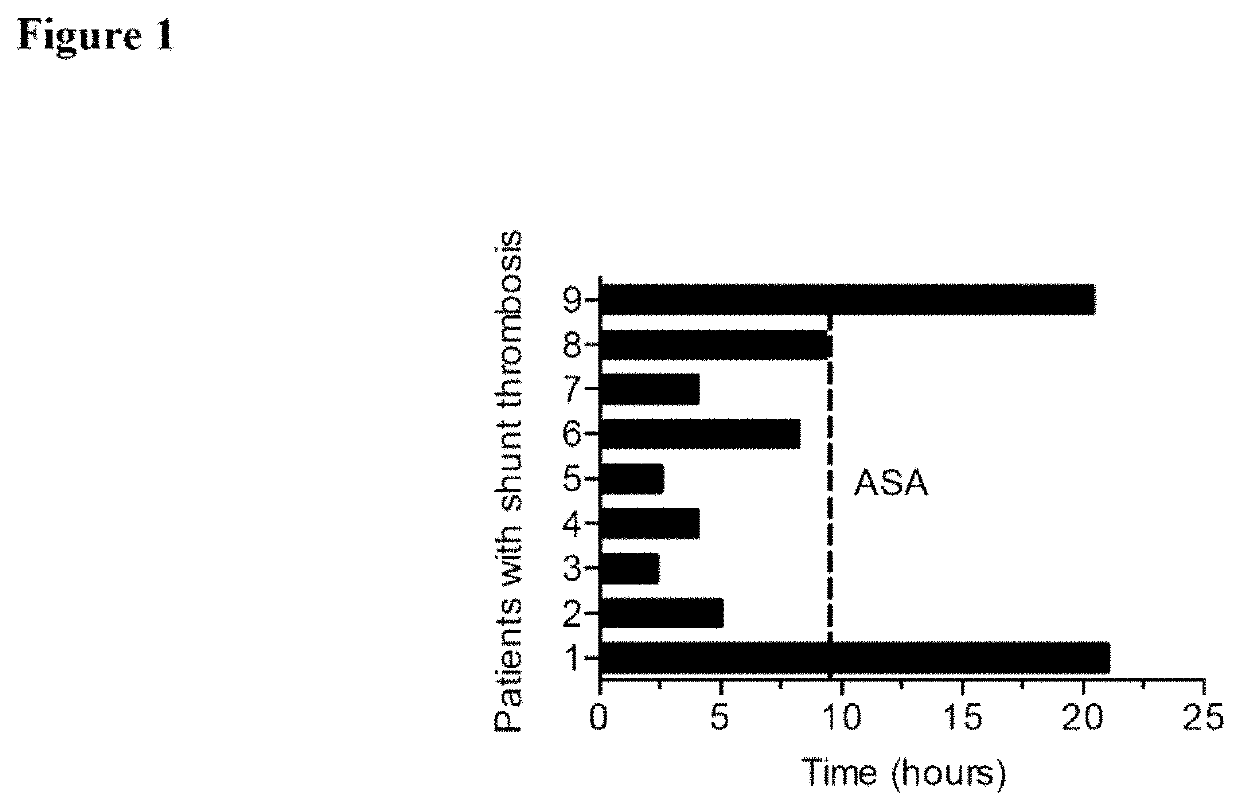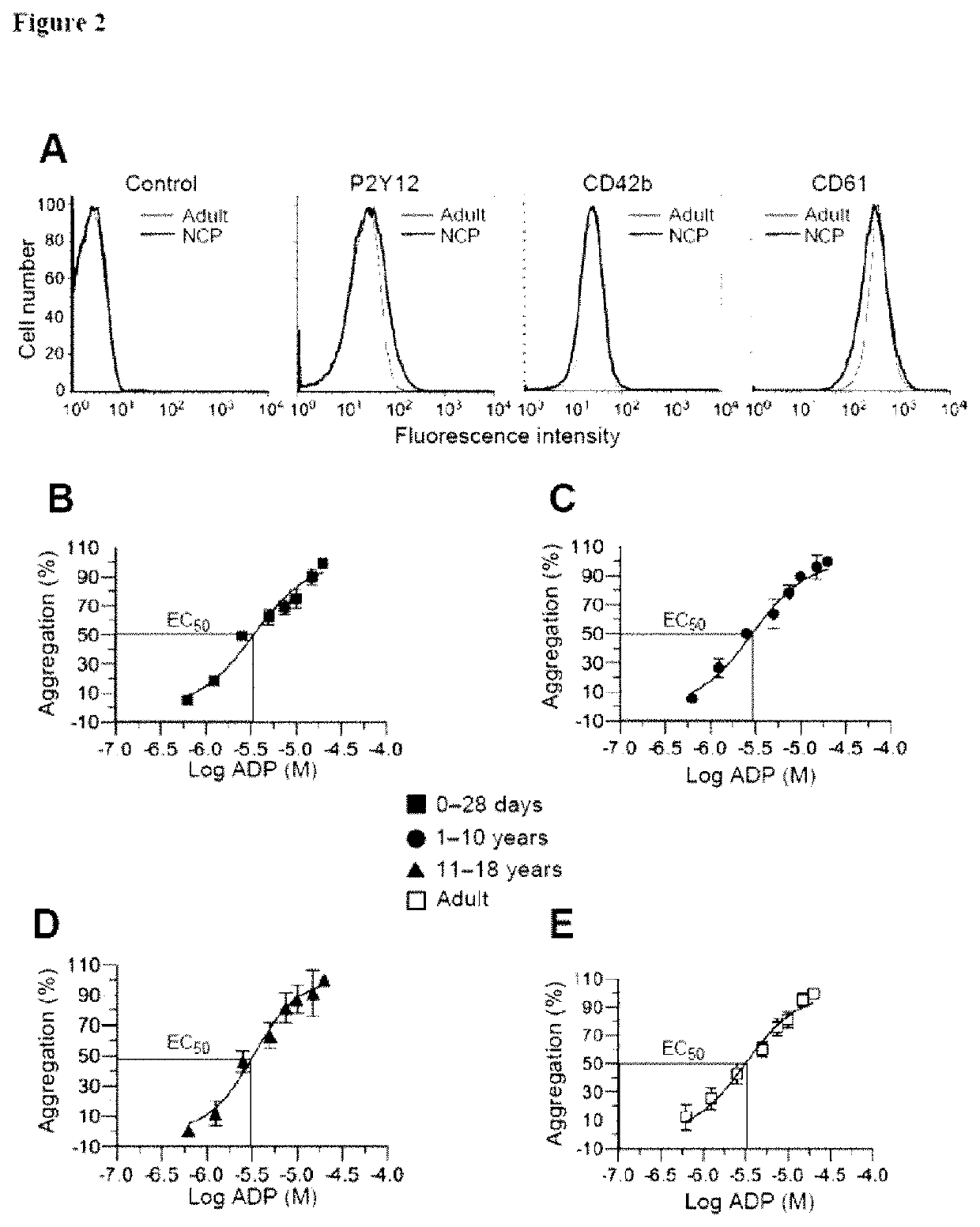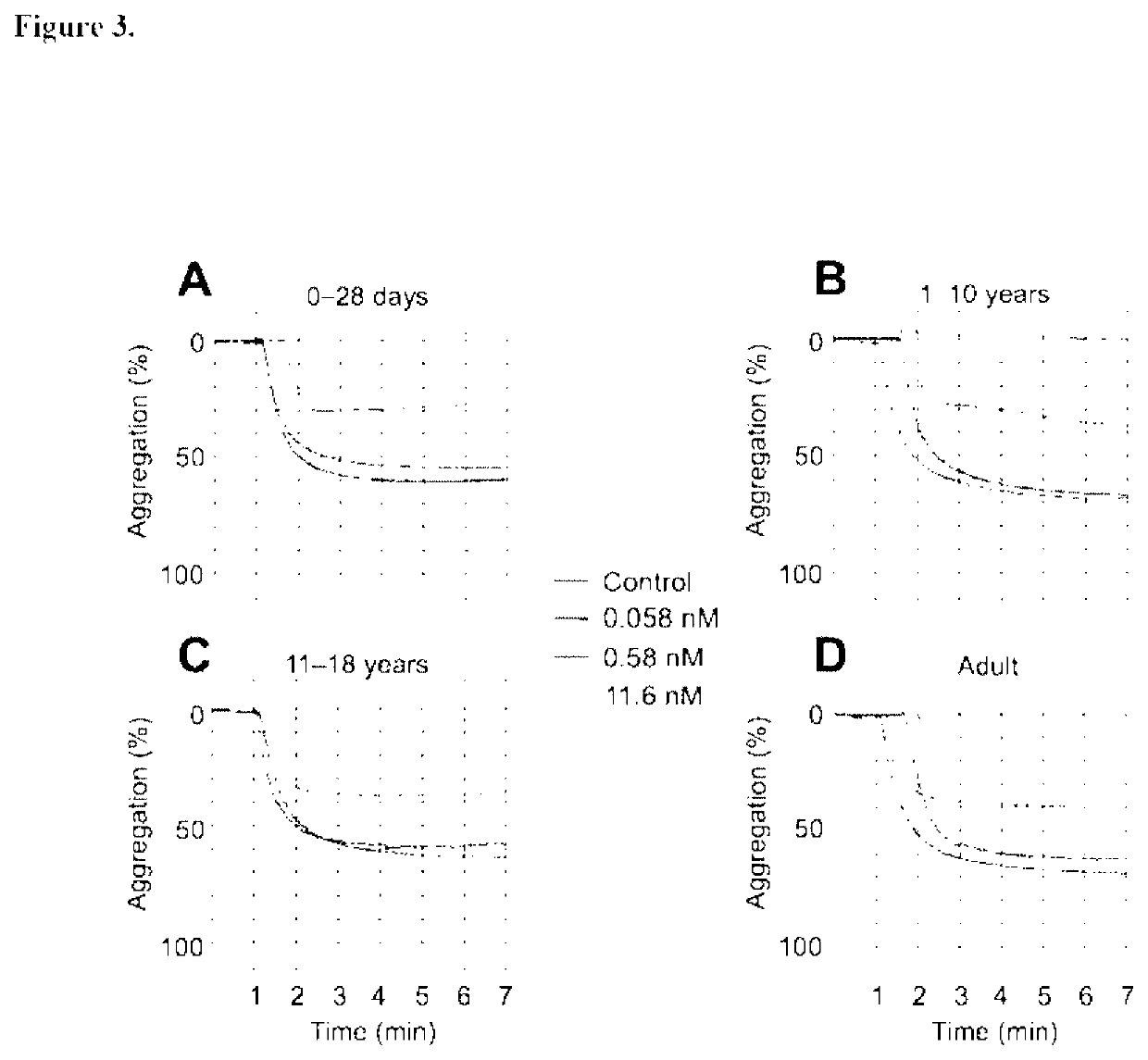Method of preventing of systemic-to-pulmonary-artery shunt thrombosis
a shunt and pulmonary artery technology, applied in the field of thrombosis prevention, can solve the problems of high risk of thrombosis, major source of morbidity and mortality, and increased risk of acute thrombotic events in this patient population
- Summary
- Abstract
- Description
- Claims
- Application Information
AI Technical Summary
Benefits of technology
Problems solved by technology
Method used
Image
Examples
example 1
[0131]Platelet Aggregation Evaluation by Means of Light Transmission Aggregometry (LTA)
[0132]In this Example, platelet reactivity and response to cangrelor of pediatric patients and healthy adults was examined.
[0133]Purified platelets were suspended to a final concentration of 400,000 / μl in platelet buffer containing 145 mM NaCl, 10 mM Hepes, 0.5 mM Na2HPO4, 5 mM KCl, 2 mM MgCl2, 1 mM CaCl2, 0.1% glucose, pH 7.4. Stock solutions of cangrelor were prepared on the day of experimentation and added to platelet suspensions (37γC, 1,200 rpm) 10 min prior to inducing aggregation with ADP (5 μM or 20 μM). Human fibrinogen (final concentration 200 μg / ml) was added to the platelet suspensions just prior to activation. Aggregation was assessed using a Chronolog Lumi-Aggregometer (model 540 VS, Chronolog, Havertown, Pa.) and permitted to proceed for 6 min after the addition of agonist. The results are reported as maximum percent change in light transmittance from baseline with platelet buffer u...
example 2
[0142]Platelet Adhesion in Flow Evaluation of Neonates with Single Ventricle Physiology Using Multichannel Microfluidic Device
[0143]In this Example, the platelet adhesion of neonates with single ventricle physiology was examined by means of multichannel microfluidic device.
[0144]A parallel-plate flow chamber was used to assess platelet accumulation on surface-immobilized plasma VWF at a wall shear rate of 1,600s-1.29, 31 In brief, a polyclonal anti-VWF antibody was absorbed overnight (4° C.) to a six-well tissue culture plate. Subsequently, the plate was washed and nonspecific interactions blocked by the addition of TBS containing 3% BSA, pH 7.4 (30 min, 37° C.). Human or murine (VWFHA1) plasma obtained from heparinized whole blood was added and the plates placed at 37° C. for an additional hour prior to use. Citrated whole blood was then perfused over the reactive substrate for 3 minutes, followed by the addition of platelet buffer lacking CaCl2 for 1 min. The number of platelets a...
example 3
[0151]In Vivo Thrombus Formation Evaluation from Pediatric and Older Patients with Congenital Heart Disease
[0152]Administration of anesthesia, insertion of venous and arterial catheters, fluorescent labeling of human platelets, and surgical preparation of the cremaster muscle in 12 week old male VWF HA1 mice have been previously described.
[0153]Human platelets (700 K / μL) were continuously infused (25 μl / min) through a catheter placed in the ipsilateral femoral artery 2 min prior to and during laser-induced injury to ensure a level of circulating cells equivalent to humans.33 Injury to the vessel wall of arterioles (40-65 μm diameter) was performed with a pulsed nitrogen dye laser applied through a 20× water-immersion Olympus objective. Human platelet-vessel wall interactions were visualized by fluorescence microscopy using a system equipped with a Yokogawa CSU-22 spinning disk confocal scanner, iXON EM camera, and 488-nm laser line (Revolution XD, Andor Technology, South Windsor, Co...
PUM
 Login to View More
Login to View More Abstract
Description
Claims
Application Information
 Login to View More
Login to View More - R&D
- Intellectual Property
- Life Sciences
- Materials
- Tech Scout
- Unparalleled Data Quality
- Higher Quality Content
- 60% Fewer Hallucinations
Browse by: Latest US Patents, China's latest patents, Technical Efficacy Thesaurus, Application Domain, Technology Topic, Popular Technical Reports.
© 2025 PatSnap. All rights reserved.Legal|Privacy policy|Modern Slavery Act Transparency Statement|Sitemap|About US| Contact US: help@patsnap.com



